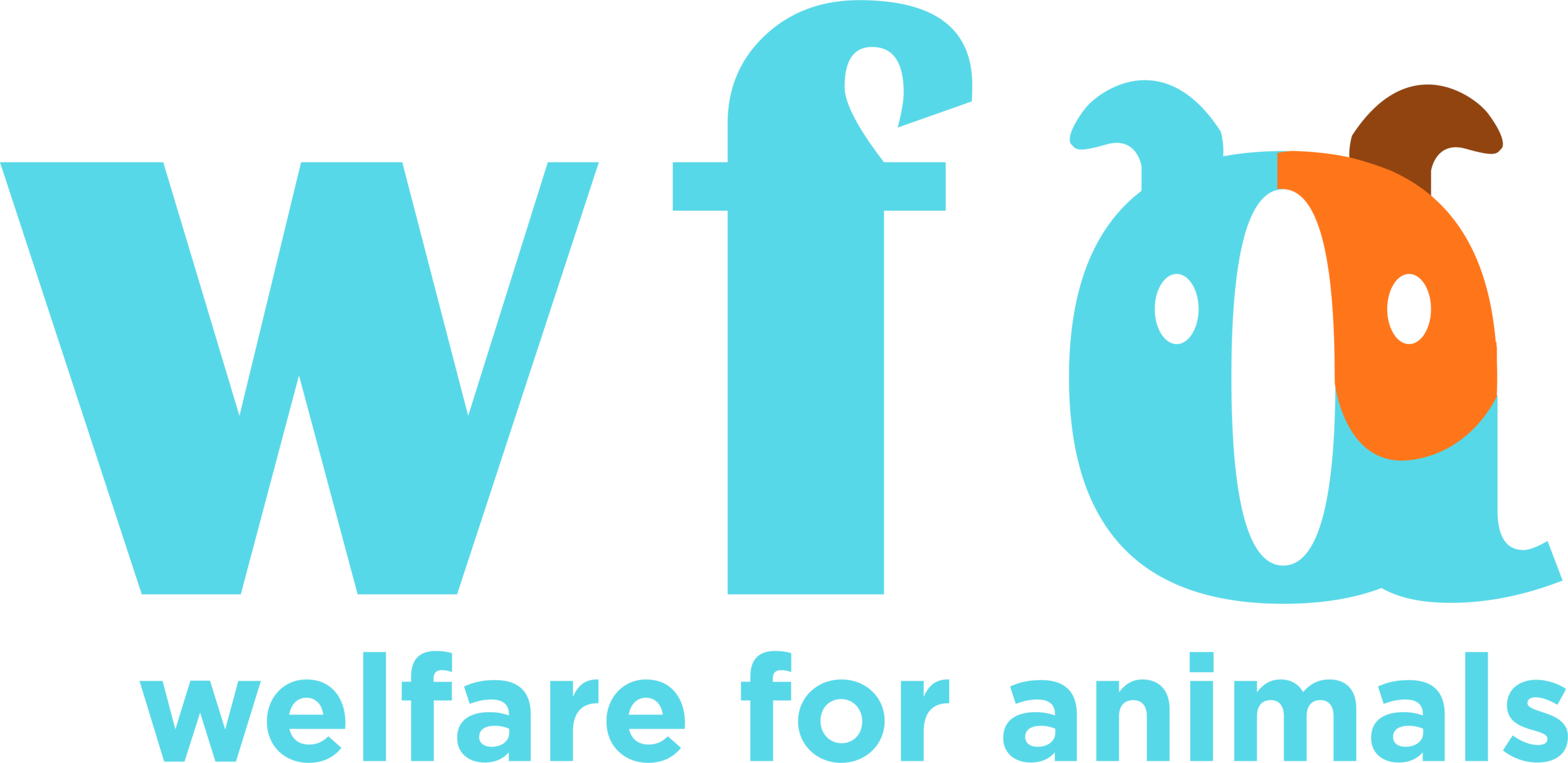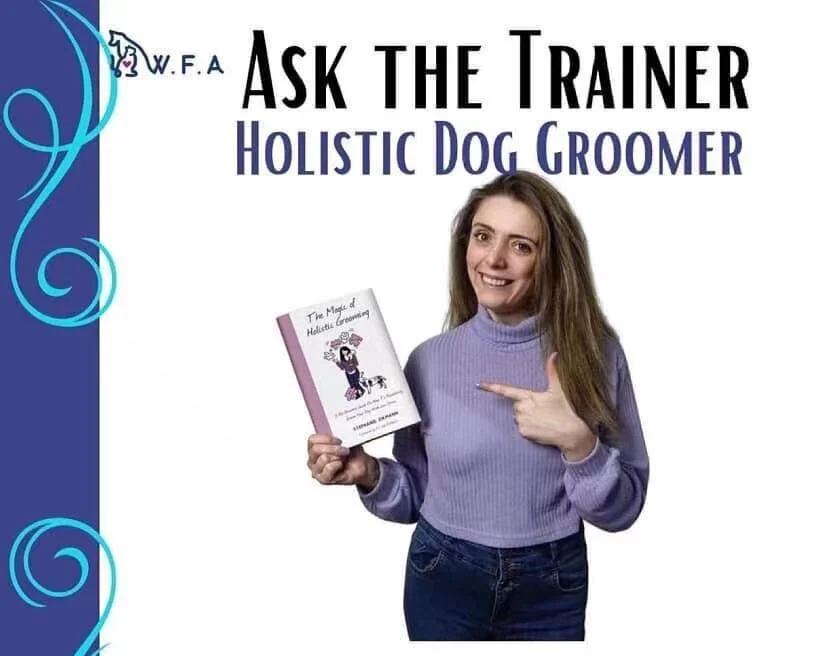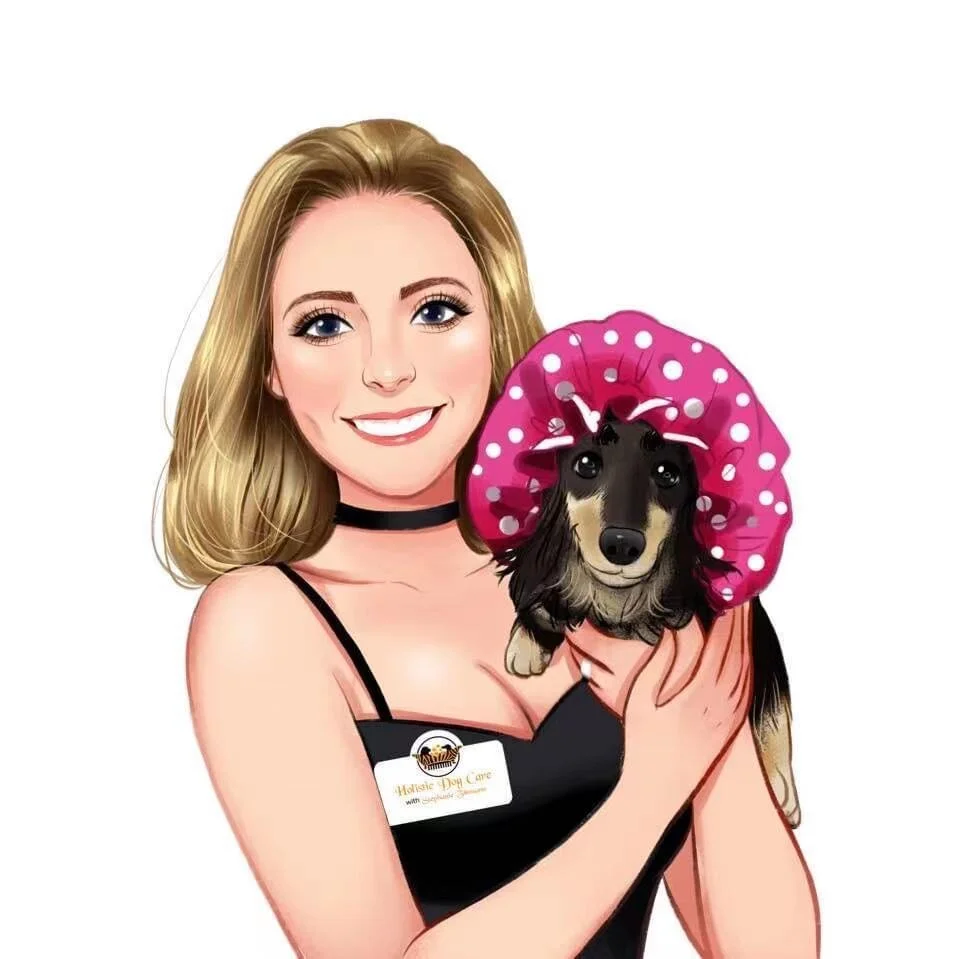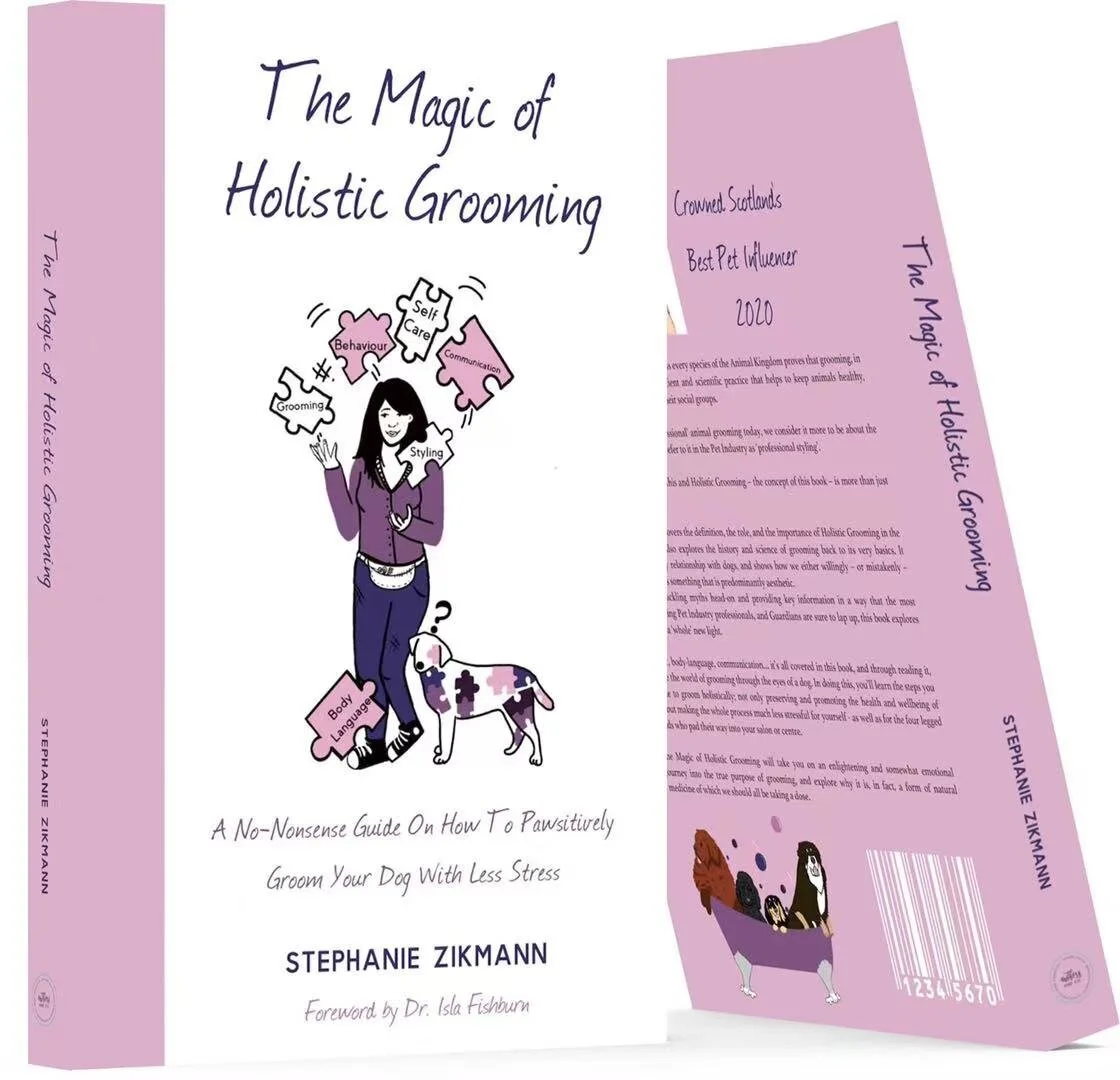Ask The Trainer for May
Ask the Trainer is a once a month blog where WFA will highlight one professional who uses positive reinforcement, force-free training methods! In this blog we will ask them a series of questions, let them tell their story and understand from their own words, how their work helps dog and cat welfare, behaviour and training.
What does grooming have to do with training, behaviour and welfare? A LOT!!! WFA has focused a lot of our work on low stress grooming, as grooming can be incredibly terrifying and stressful for dogs. In too many situations we’ve seen dog and cat welfare compromised during grooming by other professionals or cruel and NOT funny videos online. Like people laughing at a dog being scared in the bathtub or the horrible and the scary tiktok trend of peanut butter smeared onto saran wrap wrapped around a person’s head while they’re nail trimming a dog- which is a dog bite waiting to happen!!! NEVER DO THAT! It compromises the dog and the handler as the restraint used during nail trimming is extremely stressful for a dog. When did it become cool to stress out an animal???
Due to these reasons and so many more WFA is so happy to start our very first ASK THE TRAINER blog with The Holistic Dog Groomer to learn why it is so important to integrate welfare, behaviour and training with grooming.
Learn more about the wonderful Stephanie, what is Holistic Dog Grooming and her work! Check out her book here
The Holistic Dog Groomer
Let’s learn more about the amazingly talented and caring Stephanie Zikmann, and her work as The Holistic Dog Groomer- in her words and questions asked by WFA!
1. What got you interested in grooming?
I share my home with four dogs and all of them require regular grooming. Each night before bed I would brush through the coats of each of them and it quickly became my de-stressor. My work as a DJ was quite unsociable as a married mum of two, and I wasn’t happy. I passively made a remark about brushing dogs for money one night before bed and suddenly it seemed so obvious! I suppose it was my first big “A-Ha!” moment.
2. What is holistic dog grooming?
I suspect my answer to this question will continue to change as the years progress but for me, holistic grooming isn’t something that we necessarily train to do at college – to me, that’s styling.
Grooming is the act of preening, pressing, touching, nipping, rubbing, licking and scratching ourselves to preserve health, and show one another we care – it is something that every member of the Animal Kingdom naturally does to themselves, and their family units. When I talk about the word “holistic”, I’m talking about the wholesome approach I take as a guardian and professional caring for the dogs in my life. That means how I assess each individual and their individual needs, how I adapt my approach from one dog to another based on those needs, how I communicate those needs to other people involved in the overall care plan of the dog to ensure there is synchronised care in every aspect to ultimately provide a service that comes from the canine perspective and supports the indigenous goal that is, safety.
My teacher, Dr Isla Fishburn talks about this concept so amazingly, but when we talk about holistic care, we really are merely accepting that everything is connected and that we ourselves are mini ecosystems, that together make up an entire ecosystem that relies on health and security.
In a professional grooming (or styling) capacity, “holistic grooming” is simply acknowledging that it is our duty of care to ensure that we do our bit in safeguarding the dog’s need to feel safe, in order to prevent trauma in an environment that can be incredibly risky. When we implement a more mindful approach and work with a dog through cooperative techniques, we are able to successfully carry out the role of a groom with little stress.
3. What inspired you to combine dog behaviour, welfare and training into grooming?
Very good question, and I have a few reasons! The first was my experience with Nala, my Tibetan Mastiff. Nala came to me from a reckless breeder who offered little support after I discovered she had a range of health and behaviour problems. After numerous incidents where Nala would attack my other Tibetan over the rustle of paper, or the glimpse of a dog chew I decided it was time to explore ways to understand her better.
Additionally, after completing 95% of my training course in Professional Styling before walking out in total dismay and disappointment I realised very quickly that I wasn’t at all prepared for dogs with behavioural problems. The advice I received was simply to decline a dog that growled as it wasn’t worth the bite.
But I thought about Nala, and any other dog like her who would possibly be rejected simply for a lack of understanding, and confidence on the professionals’ part… I enrolled first on a Safe Dog Handling Diploma via the ISCP (International School of Canine Psychology- click here ) to dip my toes into the academic setting once more (I didn’t particularly enjoy University) to discover I absolutely loved it, and went on to obtain my Canine Behaviour Diploma soon after. Obviously, these are not the only qualifications and certifications I have since then completed – I do believe it’s important to always be investing in your personal development.
Welfare, training and behaviour are very important to create positive long-term associations with grooming
4. How is welfare linked to grooming?
Welfare is linked to all care sectors and it’s important for all professionals and guardians to acknowledge the impact a negative experience can have on the overall wellness of an animal. While I have never said that it’s common practice to be cruel and blatantly violate Animal Welfare in the grooming industry, there were certain methods that I witnessed personally that I felt didn’t truly consider the emotional and physiological needs of the animals in our care. Furthermore, from the many students who have since then confided in me their own experiences, what I’m finding is that there seems to be a typical approach in many grooming training facilities across the globe. Despite grooming sessions lasting no more than perhaps 2-hours each time, what happens within those moments adds to and impacts the dog not only short-term (when we see signs of stress, fear and sometimes even pain) but also long-term too.
When we aren’t acknowledging all of the counter-parts to welfare, that is an animals physical, emotional, physiological, mental and spiritual needs, we are increasing the risk of prolonged suffering in our environment which over the many years of visitations can lead to some of the most common chronic illnesses. It’s not as simple as knowing not to hit a dog, or knowing that dominance theory has been disproved but it’s also about understanding that from an emotional point of view, some dogs would cope better being treated alone while others might cope better with being groomed on the floor. Welfare is not so simple. And I believe it is our job to dig a little deeper to ensure that we understand what each individual dog needs because welfare also has individual parts to it depending on the needs of the animal in front of us.
5. What are alternatives to restraints in grooming?
Co-operative care. There are circumstances where the use of a handling restraint is necessary for the safety of the animal and handler. If we take an extremely fearful dog with a quicker bite reaction, then we may have to use a muzzle until we establish trust or if we have an elderly dog who struggles to stand then we may implement the use of a belly strap to help support him for short periods of time (emphasis on “short”).
But from my humble experience (and I’m happy to admit I am a relatively new groomer) the most valuable restraint in the grooming room is observation. Being able to successfully read a dog’s body language and communicate with them in a way that they understand is the difference between a positive experience and a negative one. I truly believe that. And sure, we may want to look at our insurance policies when deciding not to use a restraint on a grooming table BUT, the simple solution to this would be to have a table that can be lowered to a height where the dog can step off as he pleases. Showing a dog that there is nothing to fear is done through consent and co-operation – if the dog doesn’t feel safe, he will not relax. Safety comes with understanding that the dog has a right to remove himself from a perceived threat and be given the opportunity to assess an environment at his own pace to establish whether it is safe to resume. I work with my dogs using high value rewards – this could be treats, praise, petting or even a quick game of fetch. Whatever it is, my goal is to have the dog feel confident in the grooming environment so that I can train him to stand without restraints as I groom him.
6. How to help puppies who’ve never been groomed before have a positive experience?
I believe that the best start for puppies starts with the breeder and early experiences being handled are positive. Thereafter, guardians should be continuing handling while introducing them gradually to different sounds on the lead up to professional grooming. From a professional grooming perspective, introducing a puppy should be done through a series of short, positive sessions to include desensitisation towards the many smells, textures, objects and sounds within the grooming environment. All puppies are individual and it will depend on their confidence and resilience as to how many sessions it may take.
7. How to help a (rescue) dog who is sensitive to touch for grooming?
Being aware that grooming is quite a hands-on practice, it is important to first of all allow your rescue dog the time to adjust to his new home environment and surroundings. Depending on the history and trauma, this process may take a while however the first step is in establishing trust with the family before introducing the dog to more unfamiliar people and environments. When a rescue dog is settled, he is ready to introduce grooming. A guardian can start by introducing choice-based protocols such as ‘stationing’ (also referred to as mat or table protocol) and the ‘bucket game’ which allow the dog to consent to being touched while encouraging a calm response. By using a positive reinforcer to encourage calm behaviours, we can gradually build up a rescue dog’s tolerance to being handled and eventually, groomed. It’s worthwhile to note that in addition to this, it is important to understand why a dog may be sensitive to touch. While it could be physical and/or emotional trauma from a tragic history, or a medical condition getting to understand the emotional response behind the behaviour is crucial in helping a rescue dog to overcome his fears. Time and patience really go a long way.
8. Can you tell us bout how you use your knowledge to help your pets?
One of the reasons why I started looking for more information than what was required as a professional groomer was Nala, my female Tibetan Mastiff. Nala has some severe behaviour problems that resulted in almost weekly dog fights with my male Tibetan Mastiff ensuing. With two kids and four dogs sharing a home you can imagine how stressful this became for us all and since the breeders of Nala were less than helpful, I felt the only other option was to learn all I could to understand her better. While I instantly knew something was missing in the grooming industry during my training days, I wasn’t sure what the missing piece was until I began studying Canine Behaviour. Suddenly, it all fell into place and as I ticked off one course, it seemed I would find another, and another to compliment and broaden what I know.
Now, I can utilise all of the methods I have learnt over the last three years to help get to the underlying cause of Nala’s behaviour and in turn bring a little more harmony to our living conditions. We haven’t had a dog fight in nearly 6-months now and I’ve since discovered that her health is a contribution to a lot of her frustration. All of my dogs receive daily Reiki healing combined with mindful grooming, additionally I am now a far better prepared dog guardian as I understand the importance of mental stimulation, providing enrichment into their lives and being able to respect and cater to their individual needs a whole lot better too. Safe to say that based on what I know today I probably would never have committed to having more than two dogs (especially with young children at home and a busy working life) since providing a truly holistic care plan, bespoke to four separate dogs is extremely time-consuming! Obviously, I make it work because they are all worth it and more!
9. What are the benefits of meet and treats and packages?
A Meet and Treat is an invaluable opportunity for professional, guardian and dog to be introduced to one another in a non-confrontational way. By arranging a short appointment that can even involve the use of ACE Freework, the professional has the opportunity to observe the dog’s behaviours and current physical state without the urgency of grooming. Additionally, the professional can ask the guardian a range of questions that will help them to devise a bespoke care plan to suit the individual needs of the dog in question. The guardian can ask questions, and know what to expect in the grooming sessions ahead and the dog will be more likely to look forward to the next visit to the salon. From a business sense, packages can help convince a guardian to invest in the best possible approach for their dog. It prepares them to expect gradual progress when working with sensitive dogs, and allows the groomer to feel less under pressure to complete a full groom in one session. Additionally, the use of packages can help keep the stress levels of both the dog and the professional too – breaking sessions up into more manageable chunks will help to keep the emotional bucket as empty as possible.
10. How can people get involved as a part of The Holistic Grooming Academy (HGA)?
The Holistic Grooming Academy is an online educational platform designed to enhance the existing knowledge of either professional or guardian. There’s currently one course (an accredited diploma for grooming professionals) available however, more will be getting added gradually over the coming years to accommodate to everyone interested in learning more about holistic grooming for our animals.
There are certain prerequisites for enrolling on the diploma to ensure that students are prepared for the demands of the course content. Applications are taken through the website here but spaces are limited to ten per course, every quarter. This is to safeguard the standard of customer service for all students investing.
Students receive a luxury student pack, are assigned a private tutor and also have access to a private online portal with access to templates, videos, print-outs, lives, webinars and Q&A’s throughout the year during for additional support with their studies. As the course resource centre grows and more content added, the price of the course will naturally increase which means students have to secure their space with a deposit to lock the fee. Spaces are allocated on a first come, first serve basis. So for example, the course is currently £999 for January 2022-March 2022 which means the first 20 students to secure their space on these two intakes will get their ‘Certification in Holistic Grooming’ for £999. As of June 2022, the price for the course will increase, and so on.
I think there’s 13 spaces left for January and March 2022 so if anyone is interested and would like to lock in that price, then you can do so anytime.
Find out more about The Holistic Dog Groomer’s work below!
Facebook https://www.facebook.com/theholisticdoggroomer
Instagram @theholisticdoggroomer
Website http://www.holisticgroomingacademy.com/
Book: https://www.amazon.co.uk/Magic-Holistic-Grooming-No-Nonsense-Pawsitively-ebook/dp/B08Z8LTT3M/ref=sr_1_1?dchild=1&keywords=the%20magic%20of%20holistic%20grooming&qid=1616997709&sr=8-1&fbclid=IwAR1SEi4U1XNOrNs5gGGYUZIn5vc674oFehzPhdO435i5Zp2iltYjgxj9bz4





